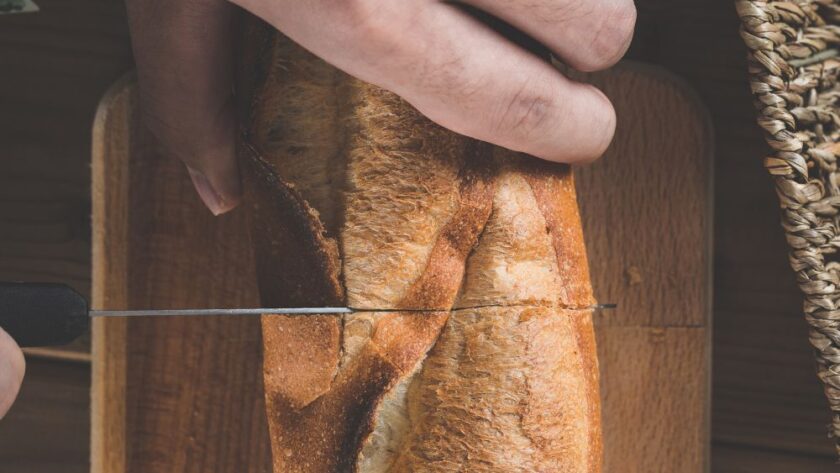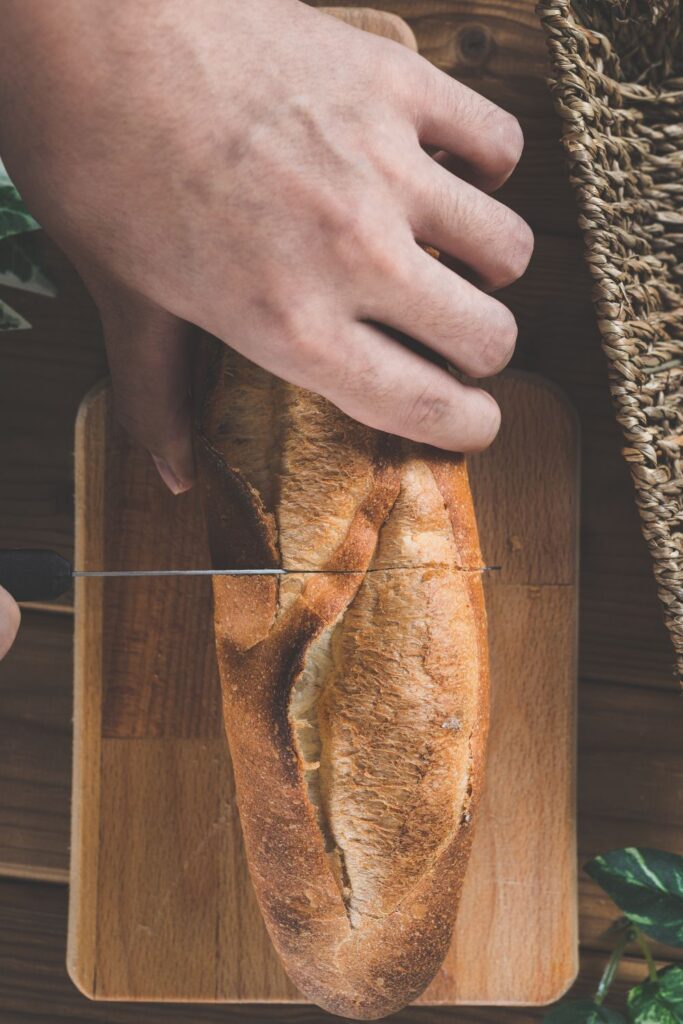If you’re dreaming of that perfect loaf—soft on the inside with a golden, crisp crust—this Jamie Oliver French Bread is for you. It’s one of those back-pocket recipes that never fails, whether you’re dipping into soup or crafting the ultimate sandwich. I tried this on a chilly Sunday, and the aroma alone made the whole house feel like a cozy French bakery. (inspired by Jamie Oliver)
Ingredients Needed
- 2 cups (480 ml) warm water (about 105°F / 40°C)
- 1 tablespoon active dry yeast
- 2 ½ teaspoons granulated sugar
- 5 cups (650 g) all-purpose flour (more as needed)
- 2 ½ teaspoons table salt (or fine sea salt)
- 1 teaspoon olive oil
How To Make Jamie Oliver French Bread
Mix the Yeast:
Begin by combining warm water, yeast, and sugar in a small bowl. Let it sit for about five minutes—when it starts to foam, you’re in business. That foamy layer means your yeast is alive and kicking!
Prepare the Dough:
In a large bowl (or your stand mixer), blend 2 cups of flour and salt. Pour in the yeast mixture and stir it all together until it starts to come together. The smell at this point? Pure comfort.
Knead the Dough:
Slowly add the remaining flour, ½ cup at a time, until you get a smooth, slightly sticky dough. Depending on the humidity, you may need a little more or less than 5 cups. Keep kneading until it’s elastic and smooth—about 8-10 minutes by hand or 5 in a mixer.
Let the Dough Rest:
Pop the dough into a lightly oiled bowl, cover it with a towel, and let it rest. If you’re in a hurry, 15–30 minutes will do, but if you’ve got the time, let it rise for an hour for better flavor and texture.
Shape the Dough:
Turn the dough onto a floured surface, divide it in half, and roll each into a 15-inch log. Pinch the seams closed and tuck in the ends. Set each loaf on a lined baking tray and gently shape them to look even and rustic.
Second Rise:
Slash the tops diagonally with a sharp knife—this helps with expansion and gives that classic look. Cover with a towel and let them rise for 30 to 60 minutes.
Bake the Bread:
Preheat your oven to 400°F (200°C). Bake for 17–23 minutes until golden. Tap the base—it should sound hollow. If browning too fast, tent with foil and reduce to 375°F (190°C).
Optional Butter Finish:
Once out of the oven, brush with melted butter if you like a softer, shinier crust.
Serve:
Slice and enjoy while still warm. That first bite? Absolute magic.

Why I Love This Recipe
I made this French bread to go with a slow-cooked beef stew, and it completely stole the show. The crust was just crunchy enough, and the inside was pillowy and warm. It’s now a weekend staple—everyone loves it, and it makes the house smell incredible.
Recipe Tips
- Use fresh yeast: Old yeast won’t rise well—check the expiry date!
- Water matters: Use a thermometer for accuracy. Too hot = dead yeast.
- Flour gradually: Adjust for weather—don’t dump it all in at once.
- Longer rise = better bread: Be patient for that deep, yeasty flavor.
- Slash the dough: It’s not just for looks—it helps with oven spring.
How To Store This Jamie Oliver French Bread
At Room Temperature
Wrap in a tea towel or paper bag. Best enjoyed within 2 days.
In the Fridge
Wrap in plastic or foil. Keeps fresh for up to 3 days, but crust may soften.
In the Freezer
Wrap tightly in plastic and foil. Store up to 3 months. Thaw at room temp.
Reheating
- Oven: 350°F (175°C) for 10–15 minutes wrapped in foil.
- Microwave: 10–20 secs with a damp paper towel.
- Stovetop: Heat each side for 2–3 mins in a covered skillet.
- Toaster: Great for reviving slices—crisps them up nicely.
Nutrition Facts (per serving)
- Calories: 244.6
- Carbs: 40.6g
- Protein: 4.6g
- Fat: 7.4g
- Sugar: 11g
- Fibre: 2g
- Sodium: 391mg
Let’s Answer a Few Questions!
Can I use whole wheat flour?
Totally! Mix it 50/50 with all-purpose for a healthier twist without losing the soft texture.
What if the dough doesn’t rise?
Check your yeast and water temp—warm, not hot. A cozy spot helps too.
Can I make it gluten-free?
Yes, with a good GF flour blend and a pinch of xanthan gum if needed.
How do I get a crispy crust?
Pop a pan of water in the oven while baking—the steam makes it beautifully crisp.
My bread is sticky—what now?
Just add a little flour, a tablespoon at a time. You want it tacky, not gluey.
Try More Recipes:
- Jamie Oliver 3 Ingredient Bread
- Jamie Oliver Olive Bread
- Jamie Oliver Sourdough Bread Recipe
- Jamie Oliver Eggy Bread
Jamie Oliver French Bread
Course: Side DishesCuisine: British2
servings10
minutes23
minutes244.6
kcalSoft, fluffy loaves with a golden crust—this French Bread is perfect for any meal, from soups to sandwiches.
Ingredients
2 cups (480 ml) warm water
1 tbsp active dry yeast
2 ½ tsp granulated sugar
5 cups (650 g) all-purpose flour
2 ½ tsp salt
1 tsp olive oil
Directions
- Mix warm water, yeast, and sugar. Let foam (5 mins).
- Combine 2 cups flour and salt. Stir in yeast mix.
- Add remaining flour slowly; knead until smooth.
- Let rise, covered, 30–60 mins.
- Divide, shape into loaves. Slash tops.
- Second rise 30–60 mins.
- Bake at 400°F (200°C) for 17–23 mins.
- Optional: brush with butter. Serve warm.

